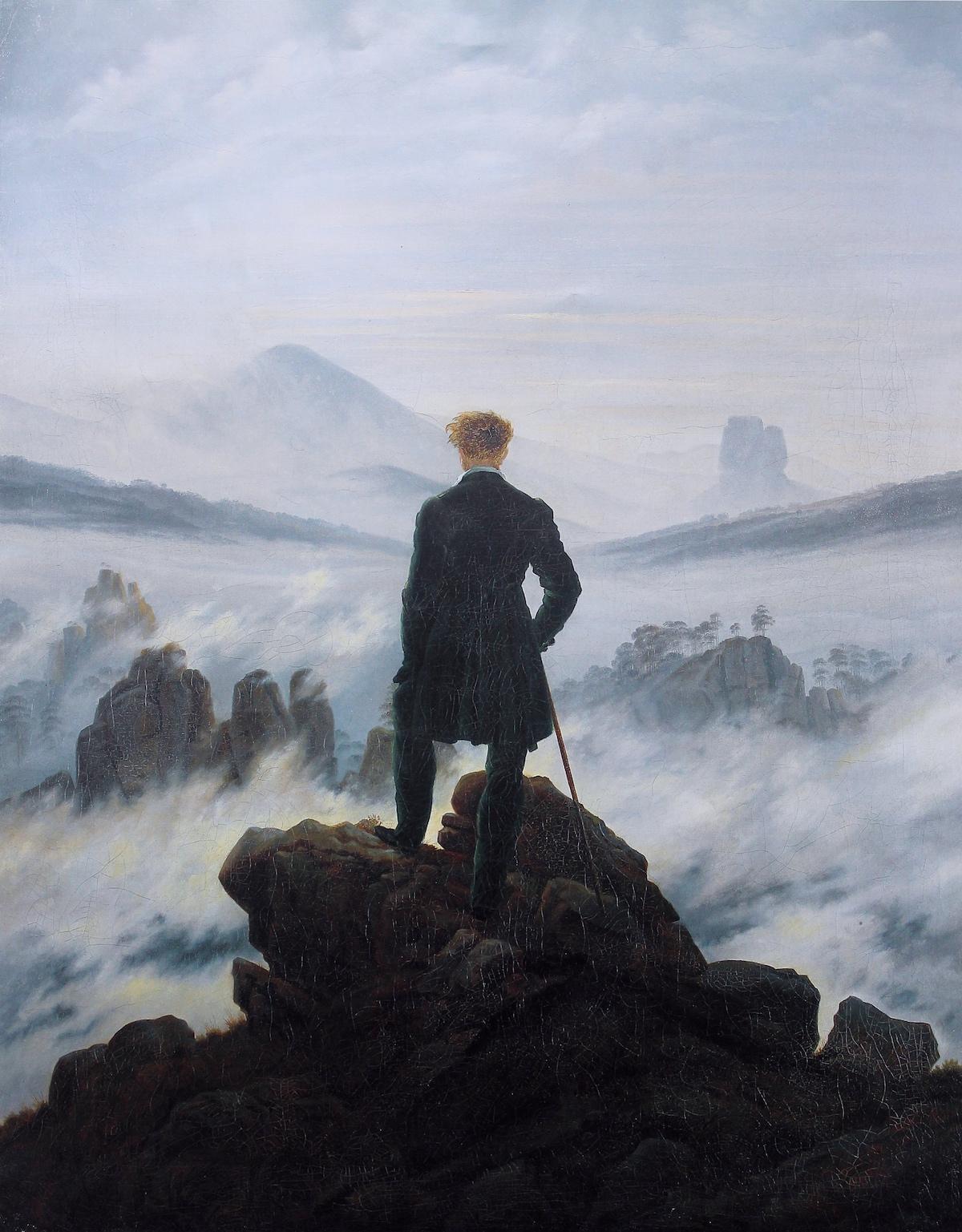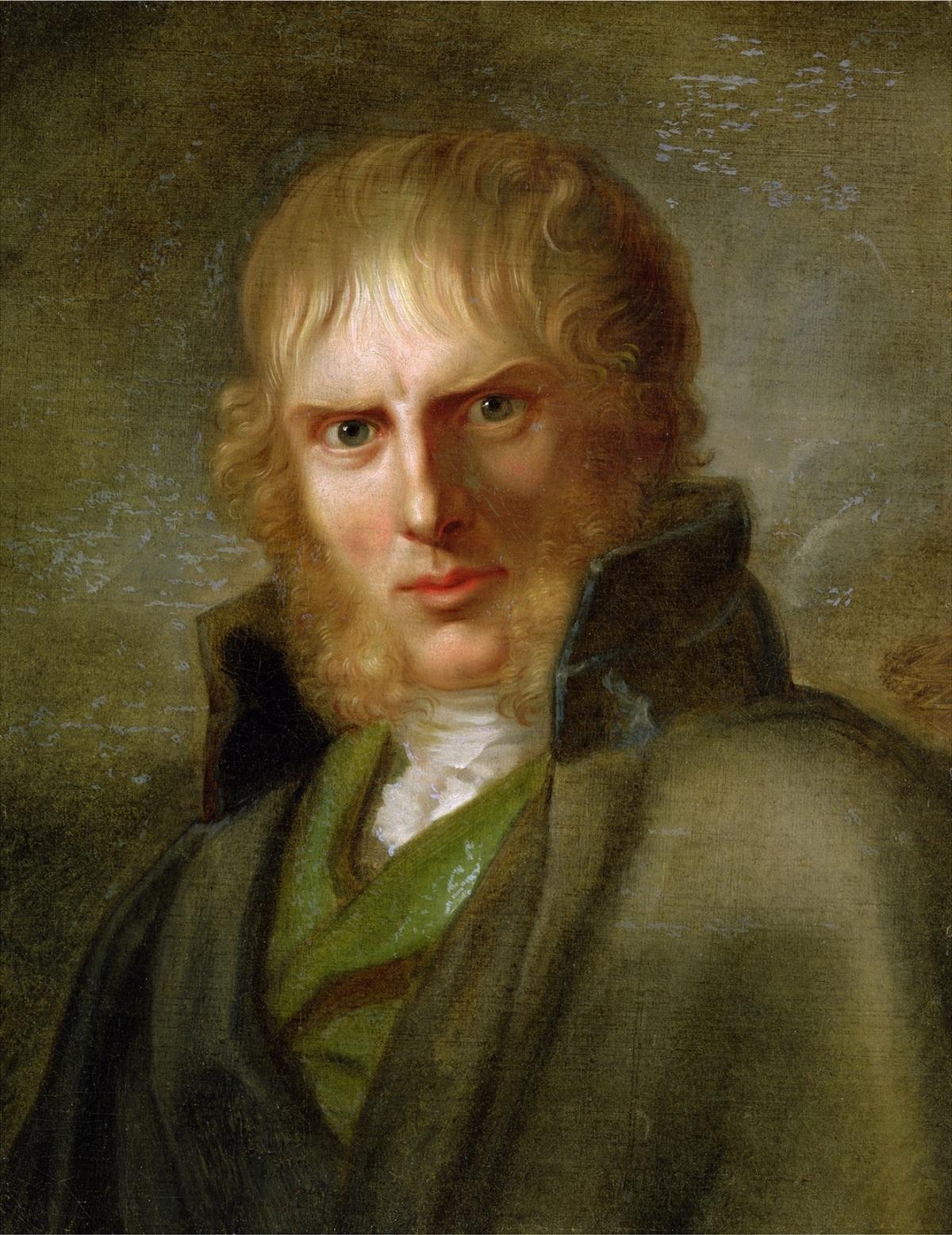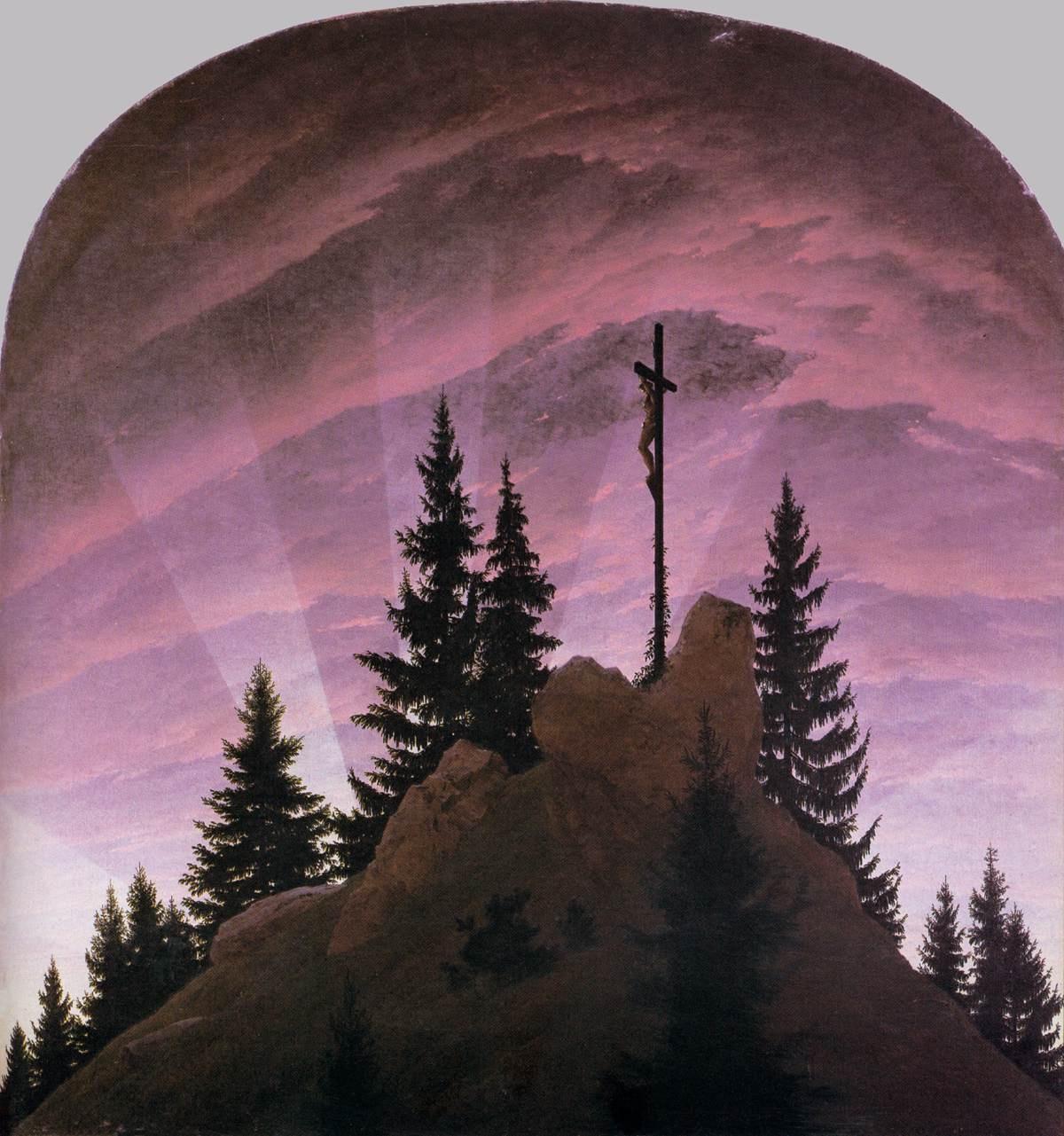In 1794, Friedrich began his studies at the prestigious University of Copenhagen where he worked under Christian August Lorentzen and the landscape painter Jens Juel. These men were inspired by the Sturm und Drang movement of late 18th-century Germany, a literary movement that sought to dignify nature, feeling, and human individualism in rejection of the doctrine of Rationalism popularized during the Enlightenment. Friedrich was a talented student and was chiefly interested in the 17th-century Dutch landscape paintings that were present in Copenhagan’s Royal Picture Gallery.
After his studies in Copenhagen, Friedrich settled permanently in Dresden. Friedrich, encouraged by both his academic mentors as well as the collective growing disillusionment with the materialist society that defined his era, sought to depict nature as a divine creation that was separate from the impurity of human civilization. Landscapes as a result became his preferred subject. Friedrich was inspired by his trips to the Baltic coast, Bohemia, and the Riesen and Harz Mountains. His paintings depict woods, hills, harbors, morning mists, and other light effects based on a close observation of nature.
Fredrich completed his first major painting in 1808 at the age of thirty-four, an altarpiece for a family chapel in Tetschen, Bohemia. Cross on the Mountains, also known as the Tetschen Altar, was significant as it was the first depiction of a landscape in an altarpiece. Although it was relatively controversial among critics, this was Friedrich’s first painting to receive widespread publicity. After two of his painting were purchased by the Prussian Crown Prince, he was elected into the Berlin Academy in 1810. Six years later, he was elected into the Dresden Academy, reaching the peak of recognition he would receive during his life.































